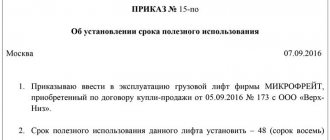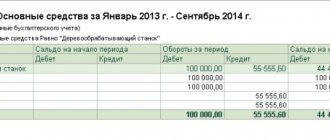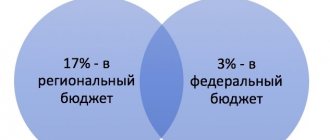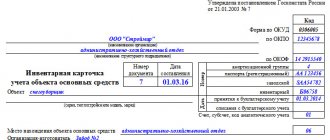Normative base
In 2021 and earlier, organizations used PBU 6/01 “Fixed Assets” to account for fixed assets.
In 2021, companies have a choice. They have the right to continue to apply PBU 6/01, or switch to the federal accounting standard FSBU 6/2020 with the same name (see “What will change in the accounting of fixed assets: read the new FSBU 6/2020”).
Starting from 2021, all organizations must be guided by FAS 6/2020. In this case, PBU 6/01 becomes invalid.
This article sets out the principles enshrined in PBU 6/01.
Fixed assets in 2021 – major changes
It was expected that from the beginning of the year there would be significant changes in the accounting of fixed assets. But new regulations were never adopted. Therefore, the old rules continue to apply for a significant number of OS objects.
However, there are some innovations, which, for the most part, affected small businesses that carry out accounting according to a simplified scheme.
Such entities received the right to create the initial cost of the fixed assets based on the amounts of payment to suppliers and contractors installing this facility. If the OS was created in the organization itself, then its price is formed from the amounts paid to contractors and other organizations. All other amounts spent can be transferred to current expenses.
Important! An organization has the right to depreciate fixed assets using a simplified regime once a year on the last day of the year.
Also, business entities with simplified accounting schemes received the right to immediately depreciate at full price fixed assets related to inventory (they have a low price and a short service life). Such measures allow such entities to reduce the burden when calculating property taxes.
You might be interested in:
Account 68 in accounting - calculations of taxes and fees: characteristics, subaccounts, typical transactions
In the current period of time, a new classifier of fixed assets has been adopted for use by groups for tax accounting, used to distinguish objects by depreciation groups. Individual objects were transferred from one group to another, and as a result, their depreciation rates will change.
What applies to fixed assets
Fixed assets include an asset, that is, the property of an organization, for which four conditions are met:
- The object is intended for use in production, performing work or providing services; for management needs, or for rental.
- The item is intended to be used for a period exceeding 12 months (or the normal operating cycle if it exceeds 12 months).
- Subsequent resale of the property is not expected.
- The facility is capable of bringing economic benefits in the future.
Examples of fixed assets: buildings and structures, working and power machines, equipment, computers, vehicles, tools, household equipment, breeding livestock, perennial plantings, etc.
In addition, fixed assets include land, water, subsoil and other natural resources, as well as capital investments in leased property and for radical land improvement.
Maintain tax and accounting records of fixed assets according to the new rules
Postings, formulas, sample documents
In accounting, fixed assets include assets with a value of 40,000 rubles or more.
At the tax office - from 100,000 rubles. Article navigation
- Accounting for fixed assets
- What does IFRS-16 indicate?
- Accounting entries for fixed assets
- Accounting for depreciation of fixed assets and amortization
- Determination of initial cost
- What determines the service life
- Types of depreciation of fixed assets
- Methods of depreciation of fixed assets in accounting
- Registration of lease of fixed assets
- What postings should the lessor of the fixed asset make?
- OS postings from the tenant's position
- What is the book value of fixed assets
- How to calculate the average annual cost of fixed assets
- Tasks and methods of auditing asset accounting
- What is the difference between tax accounting and accounting?
- Taxation of fixed assets
- Documentation of transactions with fixed assets
- Accounting statements for fixed assets
- Orders relating to fixed assets
- Title documents
- Guidelines for accounting for fixed assets
- Conclusion
According to established practice and due to the requirements of Russian legislation, enterprises must maintain double accounting of fixed assets - tax and accounting. The difference between them exists objectively, and is manifested in many signs. The tasks of accounting and tax accounting are different.
In recent years, the state has done a lot to bring tax and accounting reporting closer together, but it has not yet been possible to merge these forms into one whole. An article about the common features and differences of tax and accounting approaches to accounting for fixed assets.
What is an inventory object
This is the unit of accounting for fixed assets. An inventory object can be a separate item (for example, a cabinet), or a complex of structurally articulated items that constitute a single whole. Such a complex consists of several objects with common fixtures and accessories, mounted on the same foundation. They may have the same or different purposes. The main thing is that each item can perform its functions only as part of the complex, and not independently.
The accountant assigns each inventory item its own inventory number and creates a separate card. There is a unified form - Form OS-6 (approved by Decree of the State Statistics Committee of Russia dated January 21, 2003 No. 7). In 2012 and earlier, the use of this form was mandatory. Starting from 2013, organizations have the right to develop and approve their own form of inventory card for accounting for fixed assets.
In practice, many questions arise regarding how to correctly take into account the various components of a computer: processor, monitor, printer, mouse, etc. Officials believe that all of the listed devices belong to one object (see, for example, letter of the Ministry of Finance of Russia dated November 6, 2009 No. 03-03-06/4/950). But some experts hold a different point of view and believe that since the computer parts are not mounted on a single foundation, they can be counted as separate objects. This approach seems to us to be the most correct. (Also see “Accounting for complex objects: depreciate or write off at a time?”).
How to determine the initial cost of an object
To accept an asset for accounting, an accountant must determine its initial cost. This is the amount of costs for the acquisition, construction and production of a fixed asset. The initial cost includes, in particular:
- amount transferred to the supplier;
- payment for delivery and for bringing into a condition suitable for use;
- payment for work under construction contracts;
- the cost of consulting and information services related to the purchase of OS;
- remuneration of the intermediary through whom the fixed asset was acquired;
- customs duties and fees paid upon import of fixed assets;
- state duty transferred in connection with the purchase of the object;
- other costs directly related to the object.
Please note: the original price does not include VAT. For example, a fixed asset cost the company 120,000 rubles, including VAT 20% - 20,000 rubles. Only 100,000 rubles should be included in the initial cost, and the VAT amount should be taken into account separately.
General business expenses (salaries of administration, accountants, office rent, etc.), as a rule, are not included in the initial cost. The exception is the situation when such costs are not associated with the entire organization, but only with this fixed asset (for example, a bonus awarded to an engineer for setting up new equipment).
In general, the initial cost is fixed once and is not revised in the future. But there are exceptions to this rule. Thus, a change is possible in the case of completion, additional equipment, reconstruction, modernization, partial liquidation and revaluation.
What is the difference between tax accounting and accounting?
The differences between tax and accounting are due to the fact that they are regulated by different regulatory documents.
The Tax Code of the Russian Federation defines its criteria for classification as fixed assets. In the Tax Code of the Russian Federation, the minimum cost in 2021 is set at one hundred thousand rubles (according to PBU 6/01 - 40 thousand rubles)
Thus, non-depreciable property is included in material expenses at the time of commissioning, and the taxpayer sets the time for its write-off independently, based on the expected period of use or other considerations.
But it’s not just the 2021 limit that determines the differences. They appear for the purposes of each of the accounting systems:
- Tax accounting determines the tax base.
- Accounting allows us to judge the effectiveness of a commercial organization.
The discrepancies between tax and accounting approaches to accounting are the topic of a separate detailed study. It is unlikely that they will be completely eliminated in the near future, but work towards rapprochement is constantly underway.
How to accept an OS object for accounting
All expenses for the acquisition, construction and production of fixed assets are recorded as a debit to account 08 “Investments in non-current assets”. As a result, a value equal to the initial cost is formed here. At the moment when the object is accepted for accounting as fixed assets, the accountant writes off this value as a debit to account 01 “Fixed Assets”.
There are no clear rules regarding exactly when an object should be transferred to fixed assets. Therefore, companies have the right to independently establish this point and record it in their accounting policies. Most often, a fixed asset is placed on the balance sheet on the date of commissioning, or on the date when the object is ready for operation (for example, after successful testing).
Get a free sample accounting policy and do accounting in a web service for small LLCs and individual entrepreneurs
Assets whose value does not exceed 40,000 rubles can be reflected as part of inventories. This means that the company has the right to record such objects on account 10 “Materials”, and immediately write off the cost as current expenses. Similar rules apply in tax accounting, but there is a minimum value that allows the property to be classified as fixed assets higher, namely 100,000 rubles.
Special rules are established for real estate objects, the rights to which are subject to state registration. If the building has already been built and capital investments in it have been completed, the object must be recognized as a fixed asset, regardless of the fact of state registration. In a situation where the building has not yet been registered, it should be reflected in a special subaccount to account 01.
When accepting a fixed asset for accounting, the accountant draws up a report. You can use a unified form according to the OS-1 form (for buildings and structures - according to the OS-1a form, for groups of objects - according to the OS-1b form), or you can develop your own form.
Accounting and tax accounting of fixed assets in 2021
One of the important indicators of accounting for an object as fixed assets is its initial cost. For accounting it is defined as 40,000 rubles, for tax accounting – 100,000 rubles.
Based on these differences, there are some features of accounting for OS objects.
OS costing up to 40 thousand rubles
This kind of OS is usually called low-value, since they have a low cost, but are used in activities for quite a long time.
The company has the opportunity to either immediately write off these fixed assets as inventories or register them as fixed assets and depreciate them. This rule applies to both accounting and tax accounting. However, the company must establish the method used in its accounting policies.
OS costing from 40 to 100 thousand rubles
OS objects with a price ranging from 40,000 rubles to 100,000 rubles are included in the intermediate group.
In accounting they are defined as fixed assets, and in tax accounting as low value.
Therefore, in the first situation, the company needs to register the object (accept for operation) and amortize its price according to the existing methodology.
In tax accounting, a company has the opportunity to transfer the costs of its purchase (production) instantly or take it into account and depreciate it. For tax accounting purposes, the company must also document the adopted method in its accounting policies.
The cost of the OS is more than 100 thousand rubles
The limit of 100 thousand rubles is not used in accounting. There, any property with a price exceeding 40 thousand rubles will be recognized as an asset. However, this has significant implications for tax accounting.
For the purposes of this accounting, fixed assets that were registered later than December 31, 2015, and less than this limit, can be immediately transferred to expenses. If its price is more than 100 thousand rubles, then the object will have to be depreciated using one of the two proposed methods.
Useful life
One of the important characteristics of a fixed asset is its useful life. This is the period during which the object generates income for the organization. The organization determines it independently.
There is a classification of fixed assets, approved by Decree of the Government of the Russian Federation dated January 1, 2002 No. 1. In it, all fixed assets are divided into groups, and for each group a lower and upper limit on the useful life is specified. For example, computer equipment is classified in the second group with a useful life of two to three years inclusive.
For accounting purposes, the use of this classification is voluntary, and for tax accounting purposes it is mandatory. Therefore, in order to bring the two types of accounting as close as possible, most companies, when assigning a useful life in accounting, are also guided by the classification.
For complex objects consisting of several parts, the useful lives for each component may differ significantly. In this case, each part must be taken into account as an independent fixed asset.
Depreciation
After a fixed asset is accepted for accounting, the accountant must depreciate it, that is, regularly write off part of the cost of the object as current expenses. An exception is provided only for land plots and environmental management facilities. Such fixed assets are not subject to depreciation, because their consumer properties do not change over time.
According to accounting rules, there are four methods of depreciation: linear; reducing balance method; the method of writing off the cost by the sum of the numbers of years of the useful life and the method of writing off the cost in proportion to the volume of products (works).
This or that method is established not for an individual fixed asset, but for a group of homogeneous objects, for example, vehicles, buildings, etc. The selected method must be applied throughout the useful life of the object; the method cannot be changed.
By the way, different rules apply in tax accounting. There are only two methods available: linear and nonlinear. One method or another is established not for a group, but for all objects belonging to the organization, and the chosen depreciation method can be changed.
To avoid discrepancies, many companies, whenever possible, use the straight-line method in both accounting and tax accounting. To use it, it is necessary to calculate the annual depreciation rate. It is equal to 100% divided by the number of years of useful use. So, if the useful life is five years, then the annual rate will be 20% (100%: 5 years). Then the initial cost of the object must be multiplied by the norm, and the annual amount of depreciation charges will be obtained.
Regardless of which depreciation method the company uses, the accountant must make a monthly entry for an amount equal to the amount of annual depreciation charges divided by 12. The debit of the entry is the “cost” account, and the credit is account 02 “Depreciation of fixed assets.”
Let us add that depreciation should begin on the 1st day of the month following the month when the object was accepted for accounting and reflected on account 01. Depreciation should be stopped upon disposal of the fixed asset, or after its cost has been fully repaid. Depreciation cannot be suspended, except in cases of conservation for a period of more than three months and repair, modernization or reconstruction of an object for a period of more than 12 months.
The difference between the original cost and accrued depreciation is called the residual value of the object. It is necessary to indicate the residual value in the balance sheet, and provide information about the initial cost and depreciation in the explanations.
The balance sheet for 2021 must be submitted online Submit for free
Revaluation of fixed assets
Conducting a revaluation is a right, not an obligation of the organization. In other words, the company may refuse revaluation. If the corresponding decision is made, then the operating system will have to be revalued annually as of December 31. Revaluation is carried out in relation to all fixed assets included in the group of homogeneous objects.
As a result of revaluation, the value of an object can either be reduced (depreciation) or increased (revaluation). The changed cost is called replacement cost.
The accountant reflects the results of the markdown on account 91 “Other income and expenses.”
The postings will be as follows:
DEBIT 91 CREDIT 01 - reflects the amount of depreciation of the object DEBIT 02 CREDIT 91 - reflects the amount of depreciation adjustment made based on the results of the depreciation.
If in subsequent periods the same object is again revalued by the same amount, then the amount of the revaluation must be shown on the credit of account 91.
The accountant credits the results of the revaluation to additional capital and reflects it on the credit of account 83.
The postings will be as follows:
DEBIT 01 CREDIT 83 - reflects the amount of revaluation of the object DEBIT 83 CREDIT 02 - reflects the amount of depreciation adjustment as a result of revaluation.
If in subsequent periods the same object is marked down, then the amount of the markdown must be attributed to the reduction of additional capital and reflected in the debit of account 83. The markdown, which in magnitude exceeds the initial revaluation, must be partially written off as a decrease in additional capital, and the remaining amount must be reflected in the debit of the account 91.
For fixed assets that are revalued annually, the amount of depreciation is calculated based on replacement cost, not original cost.
How to take into account the costs of maintaining and repairing fixed assets
Amounts spent by the company on current or major repairs of fixed assets are written off as expenses and recorded in the debit of “cost” accounts. The same applies to the costs of technical inspection, maintenance, etc.
During modernization and reconstruction, another accounting option is possible. If, as a result of these measures, the initially accepted indicators improve (useful life, power, quality of application, etc.), then the costs are not written off as current expenses, but increase the initial cost of the object. In other words, the accountant must reflect the costs of modernization or reconstruction on account 08, and upon completion of the work, write off on account 01. The amount of monthly depreciation must be recalculated based on the increased initial cost and extended useful life.
Modernization and reconstruction must be recorded on the card. The company has the right to use a unified form in form OS-6, or develop its own form. If the characteristics and purpose of a fixed asset have changed significantly, it is permissible to create a new card and store the old one as a source of information.
Documentation of transactions with fixed assets
Accounting for fixed assets is based on primary documents and acts. They can be carried out on electronic or paper media in any form, in compliance with the required details. Instructions for accounting - Resolution of the State Committee on Statistics of the Russian Federation No. 7 of January 21, 2003.
Approved forms for primary accounting, to which additions can be made, are listed in the table:
| Form designation | Description of the action confirmed by the act |
| OS-1 | Acceptance or transfer of fixed assets, excluding real estate |
| OS-1a | Acceptance or transfer of real estate |
| OS-1b | Reception or transfer of several operating systems, excluding real estate |
| OS-2 | Internal OS relocation |
| OS-3 | Delivery and acceptance of OS after repair, modernization or reconstruction |
| OS-4 | Write-off of fixed assets, except vehicles |
| OS-4a | Vehicle write-off |
| OS-4b | Write-off of several operating systems, except for vehicles |
| 0С-6 | OS inventory card |
| OS-6a | Inventory card for a group of similar operating systems |
| OS-6b | OS inventory book |
| OS-14 | Receipt of equipment |
| OS-15 | Reception and transfer of installed equipment |
| OS-16 | Equipment inspection and defect report |
Accounting statements for fixed assets
During the entire period of use of the OS, all actions performed with it are covered by reporting. The accounting documents in which it is maintained are listed in the table:
| Document form | Purpose |
| Report on fixed assets | The object is characterized by depreciation group, estimated depreciation, initial and residual value, and capitalization date. Allows you to conduct analytical and synthetic analysis of the state of the operating system in the enterprise. |
| OS log book | Report on the movement of fixed assets, from the moment of registration to disposal. |
| OS accounting book | For enterprises operating under a simplified accounting system, it replaces inventory cards OS-6 and OS-6b. Filled out just like them. |
| OS comparison sheet (form INV-18) | Recording differences between inventory results and accounting data. Shortages are indicated by the sign “-”, surpluses by “+”. |
| Certificate of book value of fixed assets | Contains information about the book value of fixed assets at the time of the last report. May be for a third party or an internal sample. The OS balance sheet is requested by banks when considering a loan application. |
Orders relating to fixed assets
Due to the importance of fixed assets for each enterprise (they form the basis of its financial solvency), all actions with them (write-off, conservation, inventory, modernization, etc.) are formalized by orders of the organization’s top manager. They are completed on standard forms (additions are allowed). It is necessary to indicate the reason for this or that action (justification) and other details provided by the form.
Each of the orders is recorded in the INV-23 journal.
Sample order for fixed assets, in this case their inventory:
Download
Members of the inventory commission can be listed in the text of the document indicating their full names and positions or appointed by a separate order.
A sample order for the creation of a commission for the inventory of OS can be downloaded from the link:
Download
Title documents
Documents for the purchase of fixed assets are, as a rule, stored not in the accounting department, but with the chief lawyer, but they are also related to accounting. This is confirmation of the legal ownership of the OS.
For example, a purchase and sale agreement looks like this:
Download
An enterprise can also own property on the basis of agreements of gratuitous transfer, exchange and other title documents.
Write-off of fixed assets
An object should be written off if it ceases to generate profit, or in the event of its disposal (for example, sale). The company must create a special commission, which must include a chief accountant. The commission inspects the object and signs a decommissioning act. You can use a unified form according to the OS-4 form (for transport - according to the OS-4a form, for groups of objects - according to the OS-4b form), or develop your own form. A note about disposal is made on the inventory card, after which the organization stores the card for at least five years.
When writing off, the accountant needs to open a special sub-account for account 01 (usually called 01-B) and use it in the corresponding transactions.
The residual value and costs associated with disposal are shown in the debit of account 91, proceeds from sales are shown in the credit of account 91. Income and expenses from write-off are reflected in the reporting period to which they relate.
In case of write-off of a fixed asset that has ceased to generate profit, the postings will be as follows:
DEBIT 01-B CREDIT 01 - the original cost of the object is written off DEBIT 02 CREDIT 01-B - depreciation is written off DEBIT 91 CREDIT 01-B - the residual value of the object is written off DEBIT 91 CREDIT 60 - the cost of services of a third-party organization to liquidate the object is written off.
In case of sale of a fixed asset, the postings will be as follows:
DEBIT 01-B CREDIT 01 - the original cost of the object is written off DEBIT 02 CREDIT 01-B - depreciation is written off DEBIT 91 CREDIT 01-B - the residual value of the object is written off DEBIT 62 CREDIT 91 - proceeds from the sale of the object are received DEBIT 91 CREDIT 68 - VAT on the sale is taken into account object.
Accounting entries
Transactions with fixed assets are reflected in accounting with the following entries:
| Debit | Credit | Operation name |
| Receipt of fixed assets | ||
| 60, , , 69 | The expenses incurred for the acquisition or creation of OS are recorded in accounting | |
| 07 | 60, 10, 70, 69 | The costs of preparing the installation of the OS and its installation are recorded in accounting |
| 08 | 07 | Installation costs transferred |
| 19 | Input VAT on fixed assets costs is recorded in accounting | |
| 68 | 19 | Input VAT is accepted for deduction |
| 01 | 08 | The OS object is accepted for accounting |
| Depreciation | ||
| 20, 23, 25, 26, 29, 44 | 02 | Depreciation of fixed assets was calculated based on the direction of their use |
| Restoration, modernization, repair | ||
| 08 | 60 | The price of a third-party company for repairs and OS upgrades has been fixed |
| 19 | 60 | VAT recorded on contractor's work |
| 08 | 10, 70, 69 | Repairs and modernization of the OS were carried out on our own |
| 08 | All expenses incurred are written off to increase the cost of the operating system. | |
| Sale | ||
| 91 | Income from the sale of fixed assets is recorded in accounting | |
| 91 | 68 | VAT recorded on sales |
| 02 | 01 | Accrued depreciation written off |
| 91 | 01 | The residual value of the asset is written off |
| Liquidation | ||
| 01 | Depreciation on the liquidated asset has been written off | |
| 91 | 01 | Residual value written off |







